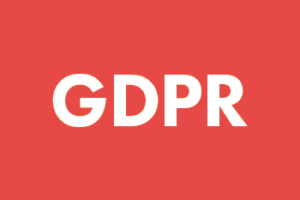
Content marketers, would you like to know the secret to getting in good with Google’s search engine spiders? Come closer and I’ll whisper it in your ear. . . .
. . .all you have to do is post high quality, relevant content.
Honestly, it’s a little more complicated than that but when you boil down all of the data from the comprehensive 2014 Ranking Factors Study from Searchmetrics, that’s pretty much what you’re left with.
But Searchmetrics did go through the trouble of writing an 83 page document. And they did produce an adorable infographic with retro robots (its as if they know me!), so we’re going to spend some time digging a little deeper.
I want to make one thing perfectly, clear. The fact that I want to make this post longer has nothing at all to do with Serachmetrics’ findings about content length. By while we’re on the subject, the study says that there was a significant rise in the area of word count.
In 2013, the top ranking sites on Google had an average of 500 to 600 words per post. This year, the top sites are posting content that falls between 900 and 1,000 words.
Searchmetrics puts the optimum length at 975 words per post / article. I’ve written for a variety of sites over the years and that number is a lot higher than most blog publishers. It’s right in the ballpark for magazines and newspapers, so it looks like our love affair with quick reads is over.
Of course, a nonsense post with 1,000 unrelated words isn’t going to do you any good. Google also ranks content based on keyword relevance. That means that keywords such as icing, fondant and wedding are great if your article is about cakes for the bride. Not so great if you’re talking about honeymoon travel.
Here’s one that surprised me. As much as Google likes wordy copy, it doesn’t like complex copy. Using the Flesch-value scale to determine grade-level, Searchmetrics found that the top sites on Google have copy that can be easily read by a 13 to 15 year old student.
Top websites have a Flesch-value between 73 and 74. I ran the test on the top part of this article and got a 75.4, so I’m right in the ballpark. (Hear that, Andy! I’m in the Google search sweet spot for readability! ) You can test you work using an online readability calculator like this one.
Link me
Internal linking and backlinking are still essential for a high Google rank. The infographic says that URLs in the top ten have an average of 130 internal links! I can’t believe I’m reading that right. That’s an enormous number of links for a single page. Or am I interpreting that fact incorrectly?
As for backlinks, 1,352 is the average number for sites in the top ten. Again – wow.
Social Signals
Finally, let’s look at how social impacts Google ranking.
Searchmetrics cautions that though there seems to be a relationship between high social signals and high search rank it might be a chicken or the egg situation.
As you can see, the top ten URLs have a large number of Facebook signals (likes, shares, etc) and a healthy number of Tweets, Pins and Google+ ones. But it’s more likely that they have these responses because the content ranks high on Google and not that they helped push the content high on Google. On the other hand, social shares and likes help create traffic and up brand awareness, so in a way social is helping with the Gooogle rank.
I could go on but I won’t. If you want to know more, visit Searchmetrics and download the report. There’s a lot of complex information packed into the pages but it also scores well on the readability scale. Win. Win. Win.
Source: Marketing Pilgrim
Link: Writers Rejoice! Study shows Google rewards those with more to say



Leave a Reply